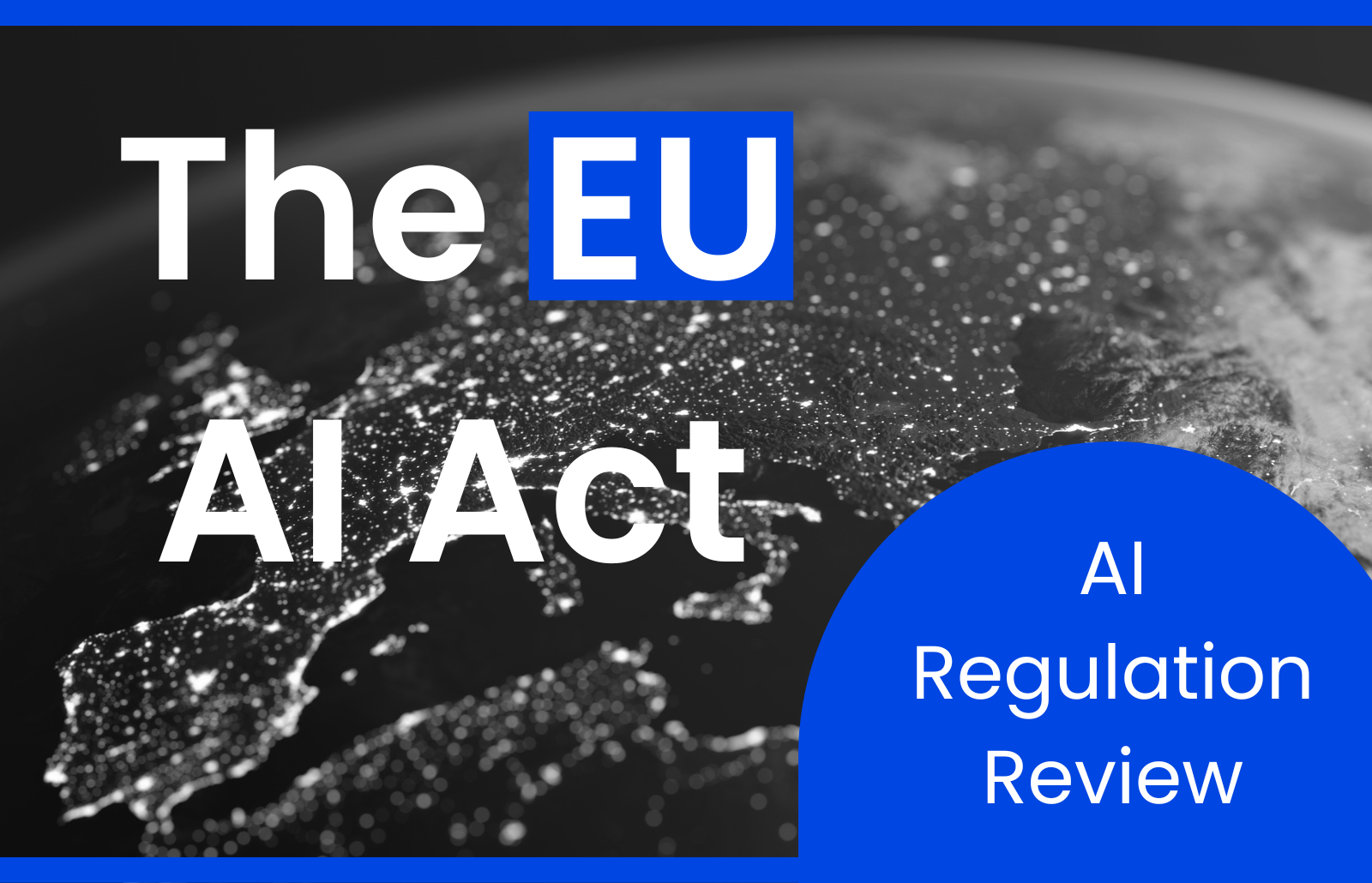The European Union’s AI Act represents a significant step towards regulating artificial intelligence technologies to ensure their safe and ethical deployment. In April 2021, the European Commission suggested some new rules for artificial intelligence (AI). These rules are like a guide for how AI should be used in the European Union (EU).
These laws look at different AI systems that can be used in many ways and decide how risky they might be for people. Depending on how risky an AI system is, there will be more or fewer rules to follow. These regulations, if passed, will establish global benchmarks for the application of artificial intelligence.
The winds of change are blowing through the realm of artificial intelligence (AI) in Europe. With a resounding vote of 71-8, the European Parliament’s civil liberties and internal market committees have given the green light to a draft AI Act. This draft AI Act, passed by the civil liberties and internal market committees, paves the way for phased implementation between 2024 and 2027, with stricter rules targeting high-risk AI applications.
Significance of EU AI Act
The EU AI Act – officially known as the Regulation of the European Parliament and of the Council Laying Down Harmonised Rules on Artificial Intelligence and Amending Certain Union Legislative Acts – aims to be the world’s first comprehensive regulatory framework for artificial intelligence (AI). It seeks to strike a balance between fostering innovation and protecting fundamental rights and safety.
Here are some key aspects of the EU AI Act:
- Scope: The Act covers a wide range of AI systems used or placed on the EU market, as well as those used in specific sectors such as healthcare, transportation, and law enforcement.
- Risk-Based Approach: One of the central features of the EU AI Act is its risk-based approach. It categorises AI systems into four risk categories: unacceptable risk, high risk, limited risk, and minimal risk. The level of regulation and transparency requirements vary depending on the risk category.
- Prohibited Practices: The Act prohibits certain AI practices that are considered to be unacceptable risks, such as AI systems that manipulate human behaviour in a harmful way, exploit information asymmetry, or use subliminal techniques beyond a person’s consciousness to distort behaviour materially.
- Data Governance and Data Quality: The EU AI Act also addresses issues related to data governance and data quality. It requires that data used in AI systems be of high quality, relevant, and representative and that it complies with applicable laws, including data protection regulations such as the General Data Protection Regulation (GDPR).
- Enforcement and Supervision: The Act establishes mechanisms for enforcement and supervision to ensure compliance with its provisions. This includes the designation of competent authorities in each EU member state responsible for monitoring and enforcing the Act.
- International Cooperation: The EU AI Act encourages international cooperation and alignment with global standards and best practices in AI regulation.
Overall, the EU AI Act represents a comprehensive regulatory framework designed to promote the responsible development and use of AI while safeguarding fundamental rights and values within the European Union.
Regulatory Landscape: Unveiling the Risk Categories of the EU’s AI Act
Despite the significant support, there were dissenting voices. Patrick Breyer, a member of the LIBE committee, expressed concerns that the rules lacked sufficient safeguards. He warned that the AI Act could pave the way for ongoing real-time facial surveillance, potentially leading to widespread biometric mass surveillance in public spaces across Europe.
One of the key aspects of the AI Act is the classification of AI systems into different risk categories based on their potential impact on society. These risk categories determine the level of regulatory scrutiny and obligations that companies developing and deploying AI systems must adhere to. Let’s delve into each level of the risk group and examine what companies need to do and the limitations they may face:
1. Unacceptable Risk (High-Risk AI Systems)
Characteristics
- Critical Infrastructure Management: AI systems used in managing critical infrastructure such as power grids, transportation networks, and water supplies fall into this category. They have the potential to cause widespread harm if they malfunction or are compromised.
- Law Enforcement and Surveillance: AI applications utilised by law enforcement agencies for surveillance, predictive policing, or facial recognition are considered high-risk due to their implications for privacy, civil liberties, and potential biases.
- Medical Diagnosis and Treatment: AI systems employed in medical diagnosis, treatment planning, and patient care decisions are high-risk because inaccuracies or biases could have severe consequences for individuals’ health and well-being.
Regulatory Requirements
- Undergo rigorous testing and certification by authorised bodies
- Compliance with strict transparency and accountability measures
- Regular auditing and reporting of performance and safety
- Prior authorization from competent authorities before deployment
Actions Companies Need to Take
- Rigorous Testing and Certification: Companies developing high-risk AI systems must invest in extensive testing and certification processes to ensure compliance with regulatory standards and demonstrate the system’s safety and reliability.
- Transparency and Accountability Measures: Companies need to implement transparency and accountability measures, including documenting the AI system’s decision-making processes, data sources, and potential biases, to provide clear information to users and regulatory authorities.
- Auditing and Reporting: Regular auditing and reporting of the AI system’s performance, safety, and compliance with regulatory requirements are essential to identify and address any issues or risks promptly.
- Authorisation Process: Companies must navigate the authorisation process, obtaining prior approval from competent authorities before deploying high-risk AI systems to ensure they meet all regulatory requirements and do not pose unacceptable risks.
Potential Limitations
- Increased Costs: The need for rigorous testing, certification, auditing, and reporting processes can impose significant financial burdens on companies, especially smaller firms or startups with limited resources.
- Extended Time to Market: Compliance with regulatory requirements, including the authorisation process, may lead to delays in bringing high-risk AI systems to market, potentially impacting competitiveness and innovation.
- Limitations on Innovation: Strict regulatory requirements could stifle innovation by imposing barriers to entry for new players in the AI market or hindering the development of cutting-edge technologies due to compliance challenges.
2. High-Risk AI Systems
Characteristics
- Recruitment and HR: AI tools used in recruitment and human resources management, such as resume screening, candidate selection, and performance evaluation, are considered high risk due to the potential for bias and discrimination.
- Credit Scoring: AI systems utilised in credit scoring and loan approval processes may exhibit biases or inaccuracies that could lead to unfair lending practices or financial discrimination.
- Educational Software: AI-powered educational software used for grading, assessment, and personalised learning may impact students’ educational outcomes and opportunities, making them subject to regulatory scrutiny.
Regulatory Requirements
- Compliance with transparency and accountability standards
- Documentation of data quality, bias mitigation, and accuracy
- Conducting risk assessments and implementing appropriate measures
- Declaration of conformity with EU regulations before market access
Actions Companies Need to Take
- Basic Accountability Standards: Companies developing high-risk AI systems must adhere to transparency and accountability standards, providing clear documentation of the system’s functionality, data sources, and decision-making processes to users and regulatory authorities.
- Risk Assessment and Mitigation: Conducting comprehensive risk assessments and implementing appropriate measures to mitigate potential harms or biases are essential steps for ensuring the safety and reliability of high-risk AI systems.
- Declaration of Conformity: Before market access, companies must declare conformity with EU regulations, demonstrating that their high-risk AI systems meet all applicable requirements and standards.
Potential Limitations
- Complex Compliance Requirements: Compliance with transparency, risk assessment, and declaration of conformity requirements can be complex and resource-intensive, posing challenges for companies, particularly those with limited expertise or experience in regulatory compliance.
- Market Entry Barriers: The regulatory burden associated with high-risk AI systems may deter new entrants from entering the market, reducing competition and innovation.
- Liability and Legal Risks: Companies may face increased liability and legal risks if their high-risk AI systems fail to comply with regulatory requirements or cause harm to individuals or society, leading to potential legal disputes or financial penalties.
3. Generative AI with Broad Applications And AI Risks
Generative AI models, including ChatGPT, that generate content need to follow specific rules:
- They must clearly state when AI generated the content.
- Summaries of copyrighted data used to train them must be made public.
- Their design must prevent them from creating anything illegal.
Advanced AI models like GPT-4, with the potential for significant impact, must undergo rigorous evaluations. Any major issues must be reported to the European Commission to manage systemic risks.
Characteristics
- Chatbots and Virtual Assistants: AI-driven chatbots and virtual assistants used in customer service, support, and information retrieval tasks are considered limited risk due to their relatively low potential for causing harm or significant adverse effects.
- Recommendation Algorithms: AI systems powering recommendation engines for content delivery, product recommendations, and personalised advertising fall into this category, as they primarily impact user experience and consumer choices.
Regulatory Requirements
- Adherence to general AI principles and ethical guidelines
- Implementing measures for transparency and user control
- Providing clear information on the AI system’s capabilities and limitations
- Ensuring compliance with data protection regulations
Actions Companies Need to Take
- Adherence to AI Principles: Companies developing limited-risk AI systems must ensure compliance with general AI principles and ethical guidelines, aligning their practices with human rights, privacy, and societal values.
- Transparency and User Control: Providing transparent information about the AI system’s capabilities, limitations, and data usage practices enables users to make informed decisions and exercise control over their interactions with the system.
- Data Protection Compliance: Compliance with relevant data protection regulations is essential to safeguard users’ privacy and personal data against unauthorised access, use, or disclosure.
Potential Limitations
- Resource Allocation: While compliance requirements for limited-risk AI systems are less stringent than those for higher-risk categories, companies still need to allocate resources to ensure adherence to AI principles, transparency, and data protection regulations.
- Competitive Pressures: Companies may face pressure to enhance the capabilities and functionalities of their limited-risk AI systems to remain competitive in the market, potentially leading to trade-offs between innovation and regulatory compliance.
- User Trust and Perception: Limited-risk AI systems rely on user trust and acceptance to succeed in the market. Any perception of non-compliance with AI principles or data protection regulations could damage user trust and affect adoption rates.
4. Minimal Risk AI Systems
Characteristics
- Entertainment Applications: Basic AI-based games, entertainment apps, and novelty applications fall into this category, as they have minimal potential for causing harm or adverse effects on individuals or society.
- Simple Recommendation Systems: AI-driven recommendation systems used in online shopping platforms or music streaming services for suggesting products, songs, or content to users are considered minimal risk due to their limited impact.
Regulatory Requirements
- Compliance with basic AI principles and consumer protection laws
- Ensuring transparency in functionality and data usage
- A minimal regulatory burden to encourage innovation and development
What Companies Need to Do
- Basic Compliance Measures: Companies developing or deploying minimal-risk AI systems should implement basic compliance measures to ensure adherence to applicable laws, regulations, and industry standards, including data protection, consumer protection, and ethical guidelines.
- User-Friendly Design: Companies should prioritise user-friendly design principles in their minimal-risk AI systems to enhance usability, accessibility, and user satisfaction.
- Continuous Monitoring and Improvement: Companies are encouraged to monitor and evaluate the performance and impact of their minimal-risk AI systems continuously, making adjustments and improvements as needed to enhance user experience and address any emerging issues or concerns.
Limitations
- Market Differentiation: Minimal-risk AI systems may face challenges in standing out in highly competitive markets, as they may lack unique features or capabilities compared to higher-risk AI applications.
- Limited Innovation Potential: Companies developing minimal-risk AI systems may have limited incentives to invest in innovation and advanced technologies, as they may prioritise regulatory compliance and risk avoidance over experimentation and exploration.
- Data Privacy and Security Risks: While minimal risk AI systems pose minimal risks to individuals or society, companies must still prioritise data privacy and security to prevent unauthorised access, use, or disclosure of users’ personal information.
Identifying Which Risk Group Your Product Falls Into
1. Evaluate Potential Harms
-
Assess Potential Impact
Consider the potential impact of your AI product on individuals’ rights, safety, and well-being. Evaluate factors such as the sensitivity of the data processed, the criticality of the decisions made by the AI system, and the potential for biases or discrimination.
-
Consider Societal Implications
Reflect on the broader societal implications of your AI product, including its potential effects on privacy, autonomy, and social equity. Determine whether your product addresses critical infrastructure, public safety, or other high-stakes domains.
-
Review Regulatory Guidance
Refer to regulatory guidance provided by authorities such as the EU AI Act to understand the criteria used to classify AI systems into different risk levels. Compare your product’s characteristics and functionalities against these criteria to determine its risk classification.
2. Conduct Risk Assessment
-
Use Risk Assessment Frameworks
Employ established risk assessment frameworks and methodologies to evaluate the risks associated with your AI product systematically. Consider factors such as the likelihood and severity of potential harms, the vulnerability of affected individuals or groups, and the feasibility of risk mitigation measures.
-
Engage with Experts
Seek input from domain experts, regulatory authorities, and stakeholders to gain insights into the specific risks posed by your AI product and identify appropriate risk mitigation strategies. Collaborate with interdisciplinary teams to ensure comprehensive risk assessment and decision-making.
-
Document Risk Findings
Document the findings of your risk assessment, including identified risks, their potential consequences, and proposed risk mitigation measures. Maintain clear documentation to demonstrate compliance with regulatory requirements and facilitate ongoing monitoring and review.
3. Seek Regulatory Guidance
-
Consult Regulatory Authorities
Engage with regulatory authorities and legal experts to seek guidance on the classification of your AI product under the EU AI Act. Provide detailed information about your product’s functionalities, intended use cases, and potential risks to facilitate an accurate assessment of its risk level.
-
Request Formal Classification
If necessary, request a formal classification of your AI product from regulatory authorities to obtain clarity on its risk level and corresponding regulatory requirements. Collaborate with authorities to address any uncertainties or ambiguities in the classification process and ensure compliance with applicable regulations.
-
Stay Informed
Stay informed about updates and developments in AI regulation and guidance issued by regulatory authorities. Monitor changes in regulatory requirements and adapt your compliance strategies accordingly to maintain alignment with evolving standards and expectations.
Why Comply with the EU AI Act
1. Legal Compliance
- Avoid Penalties and Fines: Compliance with the EU AI Act helps companies avoid potential penalties, fines, and legal liabilities associated with non-compliance. By adhering to regulatory requirements, companies demonstrate their commitment to ethical and responsible AI development and mitigate the risk of regulatory enforcement actions.
2. Enhance Trust and Reputation
- Build Trust with Users and Stakeholders: Compliance with the EU AI Act enhances trust and confidence in AI products and services among users, customers, and stakeholders. By prioritising transparency, accountability, and ethical principles, companies can build stronger relationships with their audience and differentiate themselves in competitive markets.
- Protect Brand Reputation: Demonstrating compliance with regulatory standards reinforces a company’s commitment to ethical business practices and responsible innovation, enhancing its brand reputation and credibility in the eyes of consumers, investors, and partners.
3. Foster Innovation and Market Access
- Enable Market Access: Compliance with the EU AI Act facilitates market access by ensuring that AI products meet regulatory requirements for safety, reliability, and compliance. Companies can leverage compliance certifications and declarations of conformity to demonstrate product quality and regulatory compliance, thereby facilitating market entry and expansion.
- Promote Responsible Innovation: The EU AI Act encourages responsible innovation by establishing clear guidelines and requirements for AI development and deployment. By complying with regulatory standards, companies can mitigate risks, address ethical concerns, and foster innovation in a manner that aligns with societal values and expectations.
4. Protect Individuals’ Rights and Well-being
- Safeguarding Individual Rights: Compliance with the EU AI Act helps protect individuals’ rights, privacy, and autonomy by ensuring that AI systems are developed and deployed in a manner that respects fundamental rights and values. By prioritising data protection, fairness, and accountability, companies can minimise the risk of harmful or discriminatory outcomes and enhance user trust and confidence.
- Promote Societal Well-being: Ethical and responsible AI development, guided by regulatory standards such as the EU AI Act, promotes societal well-being by addressing societal challenges, advancing public interests, and fostering inclusive and equitable access to AI technologies and benefits. By prioritising the ethical implications of AI innovation, companies can contribute to positive social outcomes and sustainable development.
Bottom Line
The EU AI Act’s classification of AI systems into different risk levels imposes specific requirements and limitations on companies based on the potential risks posed by their AI applications. While higher-risk AI systems require more stringent regulatory oversight and compliance measures, even minimal-risk AI systems are subject to basic requirements to ensure responsible development and deployment. Companies must navigate these regulatory requirements effectively to mitigate risks, build trust with users and stakeholders, and foster innovation and competitiveness in the AI landscape.
Harnessing AI Compliance: Strategic Consulting and Execution with Zartis
Zartis is at the forefront of navigating the complex landscape of AI regulation and implementation across diverse jurisdictions, industries, and technologies. With teams strategically positioned around the globe, we offer unparalleled expertise in understanding and adhering to the evolving regulatory frameworks governing AI. Whether you’re operating in healthcare, finance, energy, or any other sector, our multidisciplinary teams possess the knowledge to guide you through the nuances of compliance. From data privacy laws to sector-specific regulations, we ensure that your AI initiatives align with the highest standards of legal and ethical practices.
Moreover, we provide actionable solutions through our dedicated development teams, ready to execute your compliant AI strategy seamlessly. Whether you require data scientists, AI engineers, or project managers, our talented professionals are equipped to tackle the most intricate challenges of AI deployment. With a focus on transparency, accountability, and risk mitigation, we empower organisations to harness the full potential of AI while mitigating regulatory pitfalls. If you’re ready to embark on your AI journey with confidence, partner with Zartis for expert consultancy and execution tailored to your unique needs. Unlock the transformative power of AI while ensuring compliance every step of the way.





